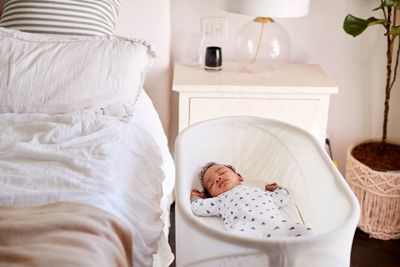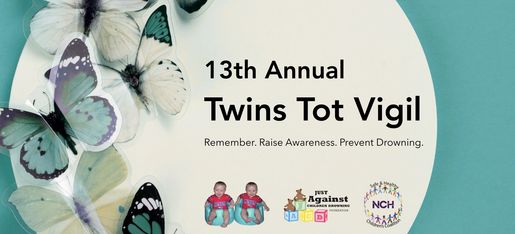Safe Infant Sleep

Safe Sleep Practices to Prevent SIDS
According to the Florida Department of Healthy Bureau of Vital Statistics, suffocation (sleep related death) is the leading cause of death for infants under 1 year old in Collier County, according to the Florida Department of Health. That’s a sobering fact—and a powerful reminder of how critical safe sleep practices are for every family.
Babies are vulnerable during sleep, and many risks—like soft bedding, unsafe sleep surfaces, or improper positioning—are preventable. That’s why it’s essential to follow safety strategies that are evidence-based and easy to implement.
The NCH Safe & Healthy Children’s Coalition is committed to reducing sleep-related infant deaths through education, outreach, and collaboration. We follow the American Academy of Pediatrics (AAP) guidelines and work with families, healthcare providers, and community partners to promote safe sleep environments for every baby.
Our Safe Infant Sleep Committee meets quarterly to review local data, share resources, and strengthen community efforts. Together, we’re building a safer future—one crib, one nap, one night at a time.
Our Safe Sleep Partners
- NCH
- Community Pediatricians
- Florida Department of Health
- Florida Department of Children and Families
- Healthy Start of Southwest Florida
- Healthcare Network
- American SIDS Institue
- Charlie's Kids Foundation
- and other key partners
Why Safe Sleep Matters
Reduce the Risk of SIDS and Sleep-Related Infant Deaths
Every year, too many infants die due to unsafe sleep environments. These tragic deaths can result from suffocation, entrapment, strangulation or Sudden Infant Death Syndrome (SIDS).
The good news? Many of these deaths are preventable. By following safe sleep guidelines, parents and caregivers can create a safe sleep space for babies.
Creating a Safe Sleep Environment

Guidelines for Parents and Caregivers
The American Academy of Pediatrics (AAP) offers clear recommendations to help reduce these risks. These guidelines should be shared with everyone who cares for your baby—including grandparents, babysitters, childcare providers, and friends.
🍼 Note: These recommendations apply to healthy babies up to 1 year old. If your baby has a medical condition, talk to your pediatrician about the safest sleep position.
1. Always place your baby on their back to sleep.
Babies under 1 year of age should be placed on their backs for every sleep - naps and nighttime.
If your baby rolls onto their side or stomach on their own, it's okay to leave them in that position only if they can roll both ways (from tummy to back and back to tummy). If your baby falls asleep in a car seat, stroller, swing, infant carrier, or sling, move them to a firm sleep surface as soon as possible.
2. Use a firm and safe sleep surface.
Place your baby in a crib, bassinet, portable crib or play yard that meets current safety standards.
- Check for recalls and avoid using broken or incomplete products, especially those with drop-side rails.
- Use only the mattress that comes with the product, covered by a fitted sheet.
- Never place blankets or pillows between the mattress and the sheet.
- Never place your baby to sleep on chairs, sofas, waterbeds, cushions, or sheepskins.
For more information visit the Consumer Product Safety Commission website at www.cpsc.gov
3. Keep soft objects and loose bedding out of the crib.
Items like pillows, quilts, comforters, bumper pads, sheepskins, and stuffed toys can pose a suffocation risk. While research hasn't pinpointed when these items become completely safe, most experts agree they pose little risk after 12 months for healthy babies.
4. Room-share, but don't bed-share.
Place your baby’s crib or bassinet within arm’s reach of your bed. This makes it easier to watch or breastfeed your baby.
Do not share a bed with your baby—this increases the risk of SIDS, suffocation, or strangulation.
5. Breastfeed as much and as long as you can.
Breastfeeding has been shown to reduce the risk of SIDS.
6. Schedule and attend well-child visits.
These visits are essential for your baby to receive important immunizations, which may help protect against SIDS.
7. Avoid exposure to smoke.
Keep your baby away from smokers and smoke-filled environments. If you smoke, try to quit. Until then, keep your home and car smoke-free, and never smoke near your baby - even outdoors.
8. Don't let your baby get too hot.
Keep your baby’s sleep environment at a comfortable temperature. Dress your baby in no more than one extra layer than you would wear. Signs of overheating include sweating or a hot chest. Use infant sleep clothing instead of blankets to keep your baby warm safely.
9. Offer a pacifier at nap time and bedtime.
Using a pacifier can help reduce the risk of SIDS. If breastfeeding, wait until it’s well established (usually 3–4 weeks) before introducing a pacifier. If your baby refuses the pacifier, that’s okay—some babies simply don’t like them. If the pacifier falls out after your baby falls asleep, you don’t need to put it back in.
10. Avoid using products that claim to reduce SIDS risk.
Do not use home cardiorespiratory monitors unless prescribed for medical reasons. Avoid products like wedges, positioners, special mattresses, or sleep surfaces—they have not been proven to reduce SIDS risk and may be dangerous.
Learn more
Charlie's Kids
American Academy of Pediatrics
American Academy of Pediatrics
Giving parents, caregivers, and safe-sleep partners life-saving tools to ensure every infant wakes up from every sleep.
American Academy of Pediatrics
American Academy of Pediatrics
American Academy of Pediatrics
Collection of tools and resources to help pediatricians and healthcare professionals provide education and guidance to parents and caregivers.
Healthy Children
American Academy of Pediatrics
Healthy Children
Resources from the American Academy of Pediatrics for parents and care givers on a variety of topics from infant to adult.
Safe Sleep Videos
What is Safe Sleep for Babies?
Babies Sleep at Night, Not All Night
Co-Sleeping Is Dangerous
How To Support A New Parent
Room Share
Set An Alarm Every Time You Breastfeed
Stay Awake While Caring For Your Baby
Stay Connected
Why Safe Sleep
CONTACT INFORMATION
Phone: 239-624-4033
Email: safehealthychildren@nchmd.org
Address: 1100 Immokalee Road, Suite 100 | Naples, FL 34110
Copyright © 2023 NCH Safe & Healthy Children's Coalition - All Rights Reserved.
This website uses cookies.
We use cookies to analyze website traffic and optimize your website experience. By accepting our use of cookies, your data will be aggregated with all other user data.

Candlelight Vigil & Walk - Join Us
Honor the lives lost to drowning and stand together for awareness and prevention.
- Sunrise Terrace at Baker Park
- Friday, January 9, 2026
- 5:00pm - 6:00pm
